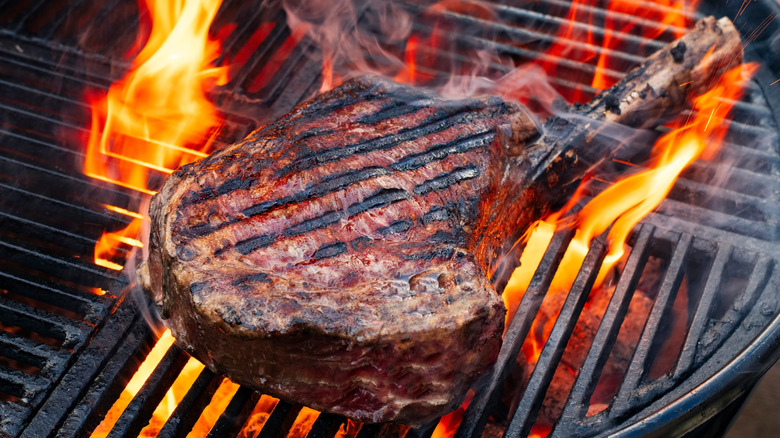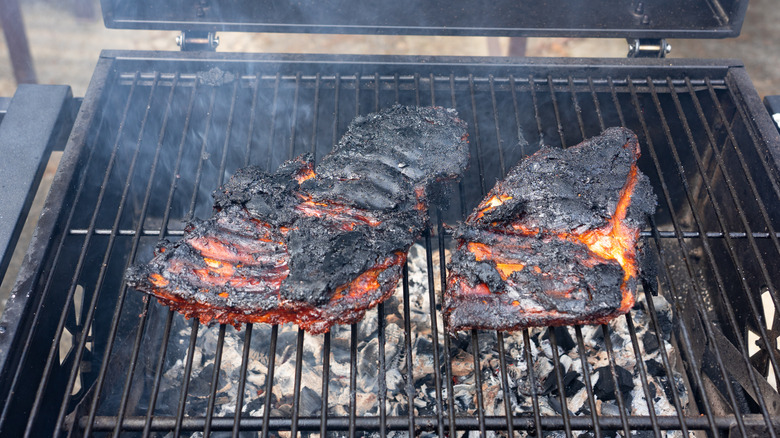Is There A Way To Rescue Overcooked Beef?
We may receive a commission on purchases made from links.
Is there anything worse than working all day on a juicy cut of beef, then realizing that it's dry and overcooked? While you may be disappointed, don't throw it in the trash just yet. According to Kyndra Holley, Peace, Love and Low Carb food blogger and international bestselling cookbook author, there are still ways to salvage the meal — it just takes a little creativity.
Sure, buying thick steak cuts will decrease the likelihood of overcooking them, but that's not always enough. When you face this issue, don't just serve the burned meat as is while grumbling apologies. "Change the context," Holley advised. "Add moisture or fat, and cut it small so it becomes part of a delicious new dish." If you're not clear on exactly how to do that, the expert had some ideas: "Slice thinly, against the grain, [this] reduces toughness. Reheat gently in sauce or broth, [this] adds moisture without overcooking. Shred and braise: simmer in BBQ, salsa, or broth to rehydrate and flavor." That's right, barbecue sauce can help save overcooked steak or other beef, just make sure to look for sauces with high acid content to help break down the protein.
You can also repurpose overcooked meat in the food processor with a little olive oil, making shredded beef for dumplings, raviolis, or empanadas. Tacos, stews, hash, and enchiladas are all good options for repurposing. If you take this route, be sure to have flavorful toppings at the ready, like chimichurri, gravy, or creamy sauces. According to the expert, this will mask dryness and make it taste like you cooked the meat this way on purpose.
The easiest (and hardest) cuts to save once overcooked
Just as certain kinds of meat are easier to cook with than others, some are also easier to rescue from overcooked oblivion — while others, not so much. According to Kyndra Holley, "[The] easiest cuts to recover when overcooked [are ones that] have fat or connective tissue that helps retain or regain moisture."
Examples of this kind of meat include chuck roast, short ribs, and brisket — all of which can be broken down and sauced up for new life. If you're looking for answers outside of the world of beef, the expert explained that "pork shoulder [is] forgiving when cooked long and low again in liquid ... [and] dark poultry meat (thighs/legs) can handle rewarming in sauce."
On the flip side are the cuts that will prove to be more difficult to turn around if you find yourself in hot water. "Lean, quick-cooking cuts dry out fast and don't rehydrate easily," Holley shared, and pointed to prime examples like beef tenderloin, strip steak, pork loin, and chicken breast. If you have overcooked one of these cuts of meat, your best approach, according to Holley, is to "slice [it] thin [and] serve with moisture-rich components." This won't provide a magical rehydration fix like it would with the more forgiving cuts, but it will at least combat some of the drier elements and allow you to impart an extra bit of flavor.


